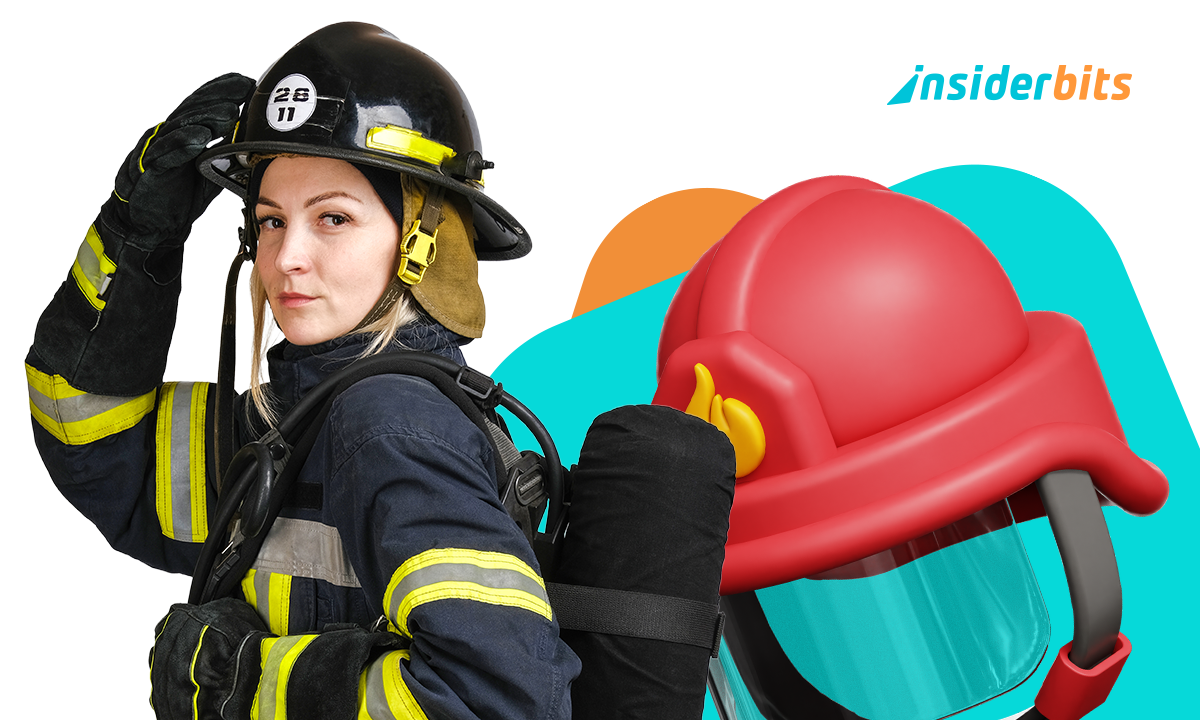Starting a career in firefighting requires more than just training—it also means being properly equipped for intense and unpredictable situations. From battling blazes to performing rescues, having the right gear can make all the difference. New recruits must understand the tools they’ll use daily and how to maintain them for top performance.
This guide breaks down the must-have items for safety, communication, and efficiency on the job. We’ll cover everything from personal protective equipment (PPE) like helmets and turnout gear, to specialized rescue tools and upkeep essentials. Knowing what to carry—and how to care for it—sets the foundation for a successful and safe firefighting career.
- Firefighter Career Path: Training, Roles, and Growth
- Firefighter Training Courses: How to Get Started
- Best Firefighter Apps for Training and Emergency Support
Firefighter Equipment List for New Entrants
Starting a career in firefighting requires proper preparation with the right firefighter equipment list.
Whether you’re joining a municipal department or a wildland firefighting team, having the correct gear is critical for safety and operational effectiveness.
This guide covers mandatory personal protection, rescue tools, and maintenance best practices.
Personal Protection Gear: What’s Mandatory
Every firefighter’s safety depends on their personal protective equipment (PPE). This essential firefighter equipment list covers the critical gear that forms the first line of defense against life-threatening hazards.
Proper PPE can mean the difference between life and death in structural fires, wildland operations, and technical rescues.
Firefighting Helmet: Your First Line of Defense
The modern fire helmet is a technological marvel designed to protect against multiple hazards:
- Impact Protection: engineered to withstand falling debris with a hard outer shell (typically thermoplastic or composite materials);
- Heat Resistance: can endure temperatures exceeding 500°F (260°C) for short durations;
- Visibility Features: many models now include:
- Integrated face shields with anti-fog coatings;
- LED lighting systems for low-visibility environments;
- Flip-down thermal imaging mounts.
Key Considerations:
- Structural firefighters require NFPA 1971 compliant helmets;
- Wildland crews need lighter NFPA 1977 rated helmets with wider brims for sun protection;
- Regular inspection should check for cracks, strap integrity, and shield mechanism function.
Turnout Gear (Bunker Gear): Your Thermal Shield
Modern turnout gear is a sophisticated three-layer system:
Outer Shell
- Constructed from advanced materials like Nomex®, Kevlar®, or PBI®;
- Treated with durable water repellent (DWR) finish;
- Features retroreflective trim for visibility.
Moisture Barrier
- Prevents steam burns and liquid penetration;
- Allows sweat vapor to escape (breathability).
Thermal Liner
- Provides crucial insulation against extreme heat;
- Typically made from quilted, fire-resistant materials.
Proper Use Guidelines:
- Always wear the complete ensemble (coat, pants, suspenders);
- Ensure proper fit – loose enough for mobility but not compromising protection;
- Never compromise on NFPA certification for structural firefighting.
Self-Contained Breathing Apparatus (SCBA): Your Lifeline
The SCBA is arguably the most critical piece of firefighter equipment:
Key Components:
- High-pressure cylinder (typically 30-45 minute capacity);
- Regulator with heads-up display (HUD);
- Full facepiece with speaking diaphragm;
- Integrated PASS device (personal alert safety system).
Maintenance Protocol:
Daily Checks:
- Cylinder pressure verification;
- Regulator function test;
- Facepiece seal inspection.
Monthly Maintenance:
- Complete system flow test;
- Cylinder hydrostatic testing (as required);
- Thorough cleaning of all components.
Annual Certification:
- NFPA 1852 compliant inspection;
- Component replacement as needed.
Emergency Procedures:
All firefighters must be proficient in:
- Emergency breathing support systems (EBSS);
- Rapid intervention crew (RIC) procedures;
- Emergency escape maneuvers.
Firefighting Gloves & Boots: Critical Extremity Protection
Structural Firefighting Gloves
- Typically three-layer construction:
- Outer shell (leather or synthetic);
- Moisture barrier;
- Thermal insulation.
- Must balance dexterity with protection;
- Specialized versions available for:
- Technical rescue;
- Hazardous materials;
- Extrication operations.
Fire Boots
- Must meet NFPA 1971 standards;
- Key features include:
- Steel or composite toe;
- Puncture-resistant midsole;
- Slip-resistant outsole;
- Waterproof membrane;
- Heat-resistant materials.
Wildland Firefighter Considerations:
In addition to standard PPE, wildland firefighters require:
- Fire shelters (last-resort protection);
- Nomex® shrouds for neck protection;
- Specialized gloves with reinforced palms;
- Lighter weight boots with aggressive tread.
For complete wildland firefighter equipment requirements, consult the USDA Fire Equipment Guide.
Tools for Rescue, Fire Suppression, and Medical Aid
Every firefighter’s effectiveness in emergency situations depends on their mastery of critical tools.
This comprehensive firefighter equipment list covers the specialized gear needed for rescue operations, fire suppression, and medical interventions.
Proper selection, maintenance, and use of these tools can dramatically improve emergency response outcomes.
Fire Axe & Halligan Bar
- Use: forcible entry, ventilation, and breaching walls.
Thermal Imaging Camera (TIC)
- Purpose: locates hotspots and victims in smoke.
Hose Nozzles & Extinguishers
- Types: fog, smooth bore, and Class A/B/C extinguishers.
Medical Kit (IFAK/Trauma Bag)
- Contenu : tourniquets, chest seals, burn dressings.
For a full firefighter equipment list, refer to the National Interagency Fire Center (NIFC) standards.
How to Maintain and Inspect Your Gear
Daily Checks
- SCBA: test air quality and regulator function;
- Turnout Gear: inspect for tears, burns, or moisture damage.
Cleaning & Storage
- Wash Gear Separately: use specialized detergent (no regular soap);
- Dry Away from Sunlight: prevents material degradation.
Annual Certification
- NFPA 1851 Compliance: ensures gear meets safety standards.
Organizing Your Equipment With Tech Tools
While no single app replaces hands-on training, these tools help track gear:
Fire Service Inventory Apps
- Caractéristiques : barcode scanning, maintenance logs, and expiration alerts.
Incident Reporting Software
- Exemples : NFIRS-based systems for equipment usage tracking.
For emergency preparedness beyond firefighting, explore our climate alert systems guide.
Réflexions finales
A well-prepared firefighter relies on a complete firefighter equipment list, proper maintenance, and efficient organization.
Always follow department protocols and NFPA standards to ensure safety. For more details, consult the International Fire & Safety Journal.





